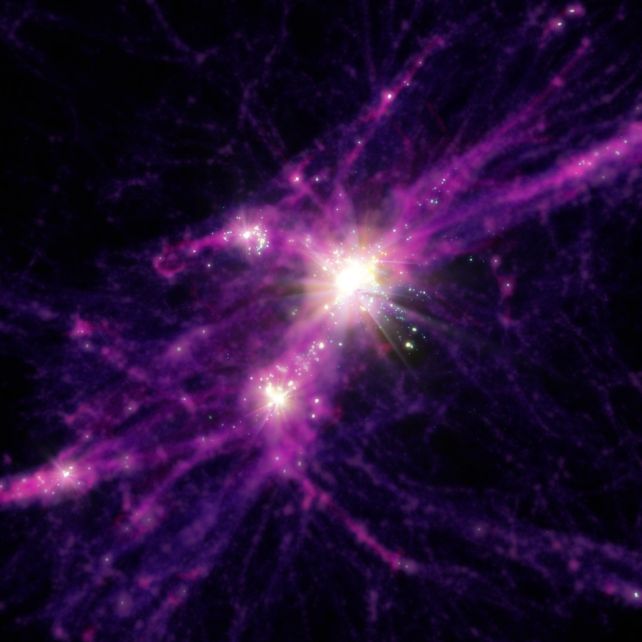The Dawn of The Universe Is Far Too Light. Astronomers may have uncovered the reasons behind this phenomenon.
There’s something strange about the beginning of the Universe.
Correction: there are a lot of ‘somethings strange’ about the beginning of the Universe. But for one particular strange something, scientists may have found a solution. There is way more UV light blazing from galaxies at the dawn of time than we expected, and it might be because they are positively fecund with stars.
According to new simulations, the amount of light detected in the Cosmic Dawn with the James Webb Space Telescope can be accounted for by star formation, without requiring any fine-tuning. This means that we don’t need to turn to solutions such as non-standard cosmological models to explain the extra UV light in the first billion years following the Big Bang.
“The discovery of these galaxies was a big surprise because they were substantially brighter than anticipated,” says astrophysicist Claude-André Faucher-Giguère of Northwestern University.
“Typically, a galaxy is bright because it’s big. But because these galaxies formed at Cosmic Dawn, not enough time has passed since the Big Bang. How could these massive galaxies assemble so quickly? Our simulations show that galaxies have no problem forming this brightness by Cosmic Dawn.”
JWST’s observations of the early Universe have upended our preconceptions about the critical epoch following the Big Bang. The telescope has found way more galaxies than we expected, looking very different from what we thought they would look like.
Some of them shine far more brightly than astronomers thought we’d find in the Cosmic Dawn. We can interpret this to mean that these galaxies are rather large. But that’s not the only way that galaxies can produce light.
“The key is to reproduce a sufficient amount of light in a system within a short amount of time,” says astrophysicist Guochao Sun of Northwestern University.
“That can happen either because the system is really massive or because it has the ability to produce a lot of light quickly. In the latter case, a system doesn’t need to be that massive. If star formation happens in bursts, it will emit flashes of light. That is why we see several very bright galaxies.”

To figure out whether the light of these early galaxies was the result of size or star formation, the team led by Sun used computer simulations to model the formation of galaxies during the Cosmic Dawn, with the materials and environment that were available in the aftermath of the Big Bang.
More mature galaxies in the nearby Universe – large, established, and relatively sedate – tend to produce stars at a more or less steady rate.
When the researchers ran their simulations, they found that galaxies in the Cosmic Dawn did something different. Their star formation occurred in furious bursts, interspersed with periods of several million years of low star formation.
This is known as bursty star formation, and it’s especially common in low mass galaxies – as those galaxies just forming in the Cosmic Dawn would have been. It’s not clear why, but astronomers think that it has to do with something called feedback, whereby star formation is curtailed by the stars themselves.
“What we think happens is that a burst of stars form, then a few million years later, those stars explode as supernovae,” Faucher-Giguère explains.
“The gas gets kicked out and then falls back in to form new stars, driving the cycle of star formation. But when galaxies get massive enough, they have much stronger gravity. When supernovae explode, they are not strong enough to eject gas from the system. The gravity holds the galaxy together and brings it into a steady state.”
The simulations also showed that the number of bright galaxies observed at a time matches JWST’s observations, without needing to tweak any parameters. This is some of the strongest evidence yet that bursty star formation, not size, is responsible for the unexpected light.
Future work taking burstiness into account, the researchers say, could help model the early evolution of galaxies and galaxy clusters.
The findings have been published in The Astrophysical Journal Letters.
Source: ScienceAlert
Do not forget to share your opinion with us to provide you with the best posts !



0 Comments